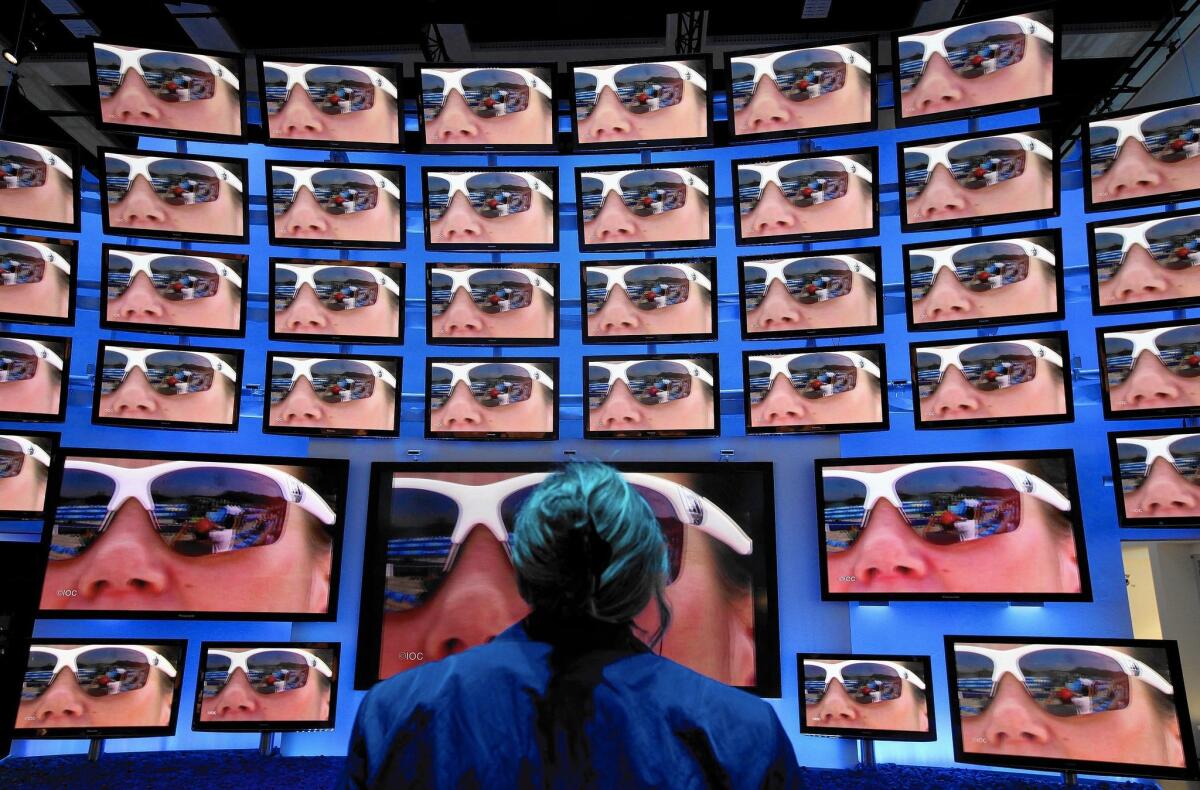After two years of decline, TV could see an ad comeback

After a year of being digital media’s doormat, the TV business is battling back in its upcoming “upfront” selling season.
Last year, broadcast and cable networks were battered by the perception that digital video sites such as YouTube are making them obsolete, leading advertisers to hold back on ad spending. But TV is feeling needed again as networks prepare for negotiations for the advance sale of commercial time for the 2016-17 TV season. The marketplace, known as the upfront, begins after the major networks present their new programming to Madison Avenue during the week of May 16.
“We’re going into the upfront season I think with a lot of wind at our back,” NBCUniversal Chief Executive Steve Burke told analysts Wednesday. “My prediction is that it’s going to be a strong upfront.”
Network sales executives say some of the marketing dollars that shifted to digital video advertising are coming back to TV, and that’s good news after two straight years of revenue declines in the upfront market. Last year, television’s take declined 3% to $17.8 billion, according to data from research firm Media Dynamics, although some executives said the drop was even steeper.
Rino Scanzoni, chief investment officer of Group M, the world’s largest buyer of TV advertising time, expects upfront spending to be up 4% to 5% from last year, which would put the revenue over $18 billion again. He believes much of that increase will come from advertisers that spend their money on upfront ad time instead of holding back to get a better deal on pricing once the TV season begins.
“In 2015 people just sat on their money,” Scanzoni said. “What will happen this year is that you’ll see some growth, but it’s not necessarily happy days are here again. It’s just people moving up their spend.”
Still, the TV industry is encouraged by the sharp increase in rates for commercials in what they call the “scatter market,” the commercial time that is bought closer to airtime during the TV season. Those spots are going for 15% to 20% more than what upfront ads sold for last year. Burke and other media executives have called it the strongest scatter market they have seen in many years.
One of the reasons: Some of those advertisers increased their TV spending after realizing they weren’t reaching enough consumers through the commercials they bought on digital video sites, according to network and ad agency executives.
As enamored as advertisers are with digital media — especially as a draw for younger viewers — TV’s ability to quickly reach a wide swath of the country with a schedule of commercials on a national network still has value.
“The emotion of the market has swung pretty dramatically over the last year,” Burke said. “People have come to the realization that broad television reach is really important in a campaign.”
Advertising and media agency executives say the pendulum is swinging back to TV because it’s easier to buy. Advertisers feel more secure with TV commercials and are not always sure their digital ads are being seen.
Interactive Advertising Bureau CEO Randall Rothenberg acknowledged that ad agencies are still learning how to best deploy digital ads and the fluctuations of money back into more traditional media are to be expected.
“What’s going on is the growing pains of any new medium,” he said. “Television and digital are very complementary to each other, and it’s likely that you can optimize your reach by running a schedule [of ads] on TV and digital together. Even in 2016, a lot of agencies and brand marketers are not fully set up with the technical and analytical abilities to optimize all the media out there to get the results they are looking for at the best possible prices.”
Although TV is experiencing a comeback, predictions for digital ad growth remain strong. The Interactive Advertising Bureau announced last week that online ad revenue hit $59.6 billion in 2015, a 20% increase over 2014. Digital video advertising growth is rising at an even faster rate. Interpublic Group’s Magna Global projects digital advertising will hit $68 billion in 2016, topping total TV spending ($66 billion) for the first time.
See more of our top stories on Facebook >>
Television also still faces the challenge as viewers have more choices through streaming video sites such as Netflix and Amazon. Nielsen data show that overall prime-time TV viewing is down 7% among the 18 to 34 age group in the current TV season, and has declined 24% over the last four years.
The networks stream their shows online as well, but Scanzoni said they are still at least a year away from having Nielsen ratings that can aggregate viewers across all platforms that viewers use. The ratings currently count those viewers who watch ads on live television on their DVRs, or on video-on-demand through their cable and satellite services.
But the lower ratings are resulting in advertisers having to buy more commercials to reach the audience levels they seek. Higher demand for commercials has driven prices up.
“Overall in the industry there is some [ratings] decline, and it’s a supply-and-demand business,” said David Levy, president of Turner Broadcasting, whose networks include TNT, TBS, CNN and TruTV.
Cable networks, including those owned by Viacom and Turner, are also cutting back on the number of commercials they are running per hour. The reduction in inventory is also helping to push up pricing. NBC is following suit by cutting the number of commercials it runs on “Saturday Night Live” next season.
Even though business is picking up, TV ad sales departments are aggressively applying some of the tools that digital media companies offer to advertisers.
Viacom, Turner and NBCUniversal have stepped up the use of data products that help sell commercials that target audiences based on their buying habits in addition to gender and age.
For example, NBCUniversal will be able to give an automaker an ad buy that will guarantee the number of potential buyers of midsize cars it reaches. To achieve that goal, the company would run commercials across its broadcast network, the home of such prime-time hits as “The Voice” and “Blindspot,” its Spanish-language network Telemundo and its 14 cable networks.
“The main selling point for digital was it had all this data and could do all these audience-targeting deals,” Levy said. “But now television can deliver those same kind of benefits and have a stronger reach vehicle and a stronger megaphone.”
ALSO
Comcast’s NBCUniversal buys DreamWorks Animation in $3.8-billion deal
After ‘Game of Thrones’ ends its epic run, how will HBO fill the void?
Judge rules Sumner Redstone trial will be open to the public
More to Read
From the Oscars to the Emmys.
Get the Envelope newsletter for exclusive awards season coverage, behind-the-scenes stories from the Envelope podcast and columnist Glenn Whipp’s must-read analysis.
You may occasionally receive promotional content from the Los Angeles Times.







